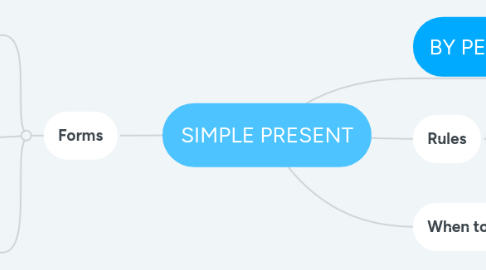SIMPLE PRESENT
by Pedro Henrique Zucchi Baldissarelli


1. BY PEDRO ZB
2. Rules
2.1. The conjugation of Simples Presente varies according to a verbal person, with the verb's termination and with the type of sentence (affirmative, negative and interrogative.)
3. When to use
3.1. Simple Present is a tense used to indicate habitual actions and opinions that occur in the present.
4. Forms
4.1. NEGATIVE FORM:
4.1.1. The negative form of Simple Present is formed using the auxiliary verbs of and does. Do is used with the pronouns I, you, we and they. The does helper is used with he, she, it.
4.2. INTERROGATIVE FORM:
4.2.1. As with negative phrases, do's helpers are used to form interrogative phrases in Simple Present. Do is used with I, you, we and they, and does is used with he, she and it.
4.3. AFIRMATIVE FORM
4.3.1. AFIRMATIVE FORM: As a general rule, it can be said that to conjugate a verb in Simple Present, just use it in the infinitive without the to in the case of the pronouns I, you, we and they, and add -s, -es or -ies in the case of the pronouns he, she and it. Verbs ending in -o, -z, -ss, -ch, -sh, -x You must add them at the end of the verb.

